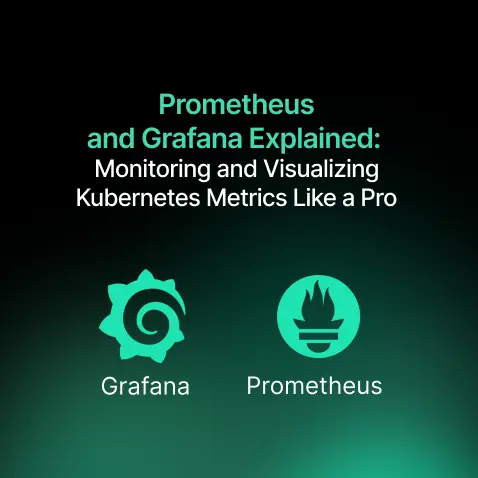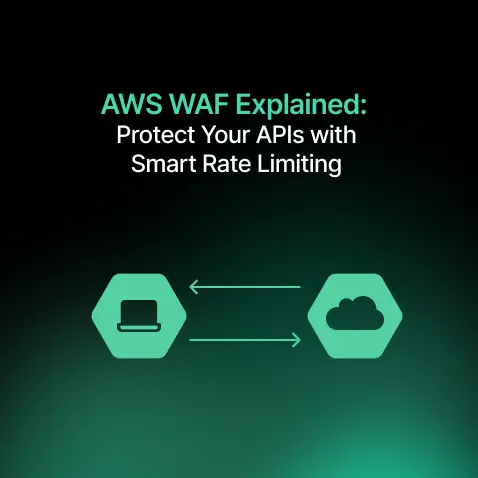What is Vertex AI? A Complete Guide to Google’s ML Platform in 2025
- Nitin Yadav
- Knowledge
About

Vertex AI is Google Cloud’s unified machine learning platform, empowering US companies to build, train, and deploy AI models faster. Explore its features, pricing, and how it compares to AWS SageMaker and Azure ML in 2025.
Industries
- AI cloud platform 2025, Google Cloud AI, Google Cloud AI services, Google ML platform, Google Vertex AI, SquareOps Vertex AI services, Vertex AI, Vertex AI AutoML, Vertex AI components, Vertex AI Feature Store, Vertex AI for US businesses, Vertex AI guide 2025, Vertex AI MLOps, Vertex AI Pipelines, Vertex AI platform, Vertex AI pricing, Vertex AI tutorial, Vertex AI vs Azure ML, Vertex AI vs SageMaker, Vertex AI Workbench
Share Via
Artificial Intelligence (AI) has moved from research labs into boardrooms, SaaS platforms, and day-to-day business operations across the US. From personalized recommendations on retail websites to real-time fraud detection in banking apps, machine learning (ML) now powers the digital economy.
Yet, building machine learning systems from scratch has historically been complex and costly. Data scientists need to manage data ingestion, preprocessing, model training, deployment, and monitoring, often with fragmented tools. This complexity has slowed down AI adoption for many companies.
Enter Vertex AI, Google Cloud’s unified ML and AI platform. Launched in 2021, Vertex AI consolidates Google’s AI offerings into a single, end-to-end ecosystem that simplifies and accelerates the machine learning lifecycle. In 2025, Vertex AI has evolved into one of the most comprehensive platforms for businesses aiming to integrate AI at scale.
This guide explores everything US companies need to know about Vertex AI: what it is, its core services, use cases, benefits, pricing, competitors, and future trends.
What is Vertex AI?
Vertex AI is Google Cloud’s managed machine learning platform that unifies the ML lifecycle from data preparation and training to deployment and monitoring into a single environment.
It addresses a key pain point: fragmentation in ML workflows. Traditionally, teams had to rely on separate tools for data preprocessing, training, serving, and monitoring. Vertex AI integrates these into a single interface.
Key highlights of Vertex AI:
- Unified workflow: Train, deploy, and manage models in one place.
- Pre-built AI APIs: Use Google’s AI services for vision, NLP, translation, and speech without building models from scratch.
- Generative AI integration: Access Google’s PaLM 2 and Gemini large language models.
- MLOps-ready: Built-in tools for automation, monitoring, and retraining.
- Google-native synergy: Deep integration with BigQuery, TensorFlow, JAX, and Cloud Storage.
In short: Vertex AI makes enterprise AI more accessible, scalable, and production-ready.
Core Components of Vertex AI
Vertex AI provides a suite of tools and services that span the ML lifecycle. Let’s break down its major components:
1. Vertex AI Workbench
- A unified data science environment for Jupyter notebooks.
- Pre-integrated with BigQuery and Spark for seamless data access.
- Example: A US SaaS startup uses Workbench to explore churn data stored in BigQuery.
2. Vertex AI Pipelines
- Automates ML workflows with Kubeflow Pipelines.
- Enables MLOps by orchestrating training, deployment, and retraining.
- Example: A healthcare provider uses pipelines for HIPAA-compliant ML workflows.
3. Vertex AI Training
- Supports training with CPUs, GPUs, and TPUs.
- Options for custom training, distributed training, and AutoML.
- Example: A FinTech firm trains fraud detection models using TPUs.
4. Vertex AI Prediction
- Fully managed model serving.
- Real-time and batch predictions.
- Example: An e-commerce company deploys recommendation models for live personalization.
5. Vertex AI Feature Store
- Central repository for storing and serving ML features.
- Ensures consistency across training and inference.
- Example: A retail company manages user profiles for personalization.
6. Vertex AI Experiments
- Tracks training runs, hyperparameters, and performance.
- Helps teams compare models efficiently.
7. Vertex AI Model Registry
- Centralized catalog for managing model versions.
- Simplifies deployment and collaboration across teams.
8. Vertex AI Monitoring
- Tracks model drift, anomalies, and performance.
- Example: A bank monitors its credit scoring models for bias.
9. Generative AI on Vertex AI
- Integration with Google’s PaLM 2 and Gemini models.
- Use cases: text generation, summarization, chatbots, code generation.
- Example: A US media company uses Vertex AI for AI-driven content summaries.
Together, these components allow US businesses to scale ML projects from prototype to production without leaving the Google ecosystem.
Why US Companies Should Consider Vertex AI in 2025
- Unified ML Platform
- No more fragmented workflows. Vertex AI covers the entire lifecycle.
- No more fragmented workflows. Vertex AI covers the entire lifecycle.
- Generative AI Capabilities
- Access to advanced LLMs like Gemini for text, image, and multimodal AI.
- Access to advanced LLMs like Gemini for text, image, and multimodal AI.
- MLOps Automation
- Built-in pipelines, model monitoring, and retraining reduce manual work.
- Built-in pipelines, model monitoring, and retraining reduce manual work.
- Enterprise Compliance
- SOC2, HIPAA, and FedRAMP support make it suitable for US-regulated industries.
- SOC2, HIPAA, and FedRAMP support make it suitable for US-regulated industries.
- Google-native Advantage
- Strong synergy with BigQuery, Looker, and TensorFlow.
- Strong synergy with BigQuery, Looker, and TensorFlow.
- Talent Familiarity
- Many US engineers are already trained on TensorFlow and Google AI tools.
For US businesses in SaaS, FinTech, healthcare, and retail, Vertex AI is a future-proof investment in AI infrastructure.
How Vertex AI Works: Workflow & Architecture
The Vertex AI workflow can be summarized as:
- Data Ingestion
- Pull data from BigQuery, Cloud Storage, or Pub/Sub.
- Pull data from BigQuery, Cloud Storage, or Pub/Sub.
- Data Preparation
- Clean and preprocess with Workbench or Dataflow.
- Clean and preprocess with Workbench or Dataflow.
- Model Training
- Train with AutoML or custom frameworks.
- Leverage GPUs/TPUs for scale.
- Model Deployment
- Serve models using Prediction and Model Registry.
- Serve models using Prediction and Model Registry.
- Monitoring & Retraining
- Use Monitoring to detect drift and Pipelines for retraining.
Example: A US retailer uses Vertex AI to forecast demand → ingest sales data from BigQuery → train model with AutoML → deploy in Prediction → monitor accuracy → retrain monthly.
Vertex AI Use Cases for US Businesses
1. SaaS
- Customer churn prediction.
- Real-time personalization of dashboards.
2. FinTech
- Fraud detection using anomaly detection models.
- Risk scoring for loans.
3. Healthcare
- Diagnostic support for imaging.
- HIPAA-compliant patient monitoring with IoT + ML.
4. Retail & E-Commerce
- Personalized recommendations.
- AI-driven demand forecasting.
5. Media & Entertainment
- Video tagging and content recommendations.
- Generative AI for script summarization.
6. Manufacturing & IoT
- Predictive maintenance with sensor data.
- Edge AI deployment.
US companies across industries leverage Vertex AI to combine cloud-scale and AI intelligence.
Benefits of Using Vertex AI
- Faster AI Adoption: AutoML tools allow non-experts to build models.
- End-to-End Platform: Reduces fragmentation.
- Scalability: Built to handle enterprise-scale workloads.
- Security & Compliance: Meets strict US regulatory needs.
- Generative AI Edge: Google’s Gemini + Vertex AI lead in LLM innovation.
- Cost Efficiency: Pay-as-you-go model avoids massive infra costs.
Vertex AI Pricing Explained
Vertex AI uses pay-as-you-go pricing. Costs depend on:
- Training: Charged per compute hour (CPU/GPU/TPU).
- Prediction: Charged per request or compute usage.
- Pipelines & Feature Store: Based on execution and storage.
Example Scenarios:
- Startup: Training models with AutoML → a few hundred dollars/month.
- Enterprise: Training large LLMs with TPUs → thousands/month, but offsets infra costs.
Cost Optimization Tips:
- Use preemptible GPUs for cheaper training.
- Batch predictions instead of real-time when possible.
- Optimize datasets before training to reduce compute usage.
Vertex AI vs AWS SageMaker vs Azure ML
|
Feature |
Google Vertex AI |
AWS SageMaker |
Azure ML |
|
Ecosystem |
BigQuery, TensorFlow |
Deep AWS integration |
Microsoft ecosystem |
|
Generative AI |
Gemini, PaLM 2 |
Bedrock (LLMs) |
OpenAI integration |
|
MLOps |
Built-in Pipelines |
Mature MLOps, registries |
Strong pipelines |
|
Compliance |
HIPAA, SOC2, FedRAMP |
HIPAA, SOC2, PCI DSS |
HIPAA, SOC2 |
|
Ease of Use |
AutoML & Workbench |
Wide but complex options |
Strong UI for enterprises |
Verdict:
- Vertex AI: Best for data-heavy + generative AI use cases.
- SageMaker: Best for AWS-native companies.
- Azure ML: Best for Microsoft-heavy enterprises.
Getting Started with Vertex AI: Beginner Tutorial
- Set Up Project
- Create Google Cloud project.
- Configure IAM roles for ML team.
- Create Google Cloud project.
- Prepare Dataset
- Upload to Cloud Storage or query from BigQuery.
- Upload to Cloud Storage or query from BigQuery.
- Train Model
- Use AutoML for no-code training.
- Use custom training for advanced workloads.
- Use AutoML for no-code training.
- Deploy Endpoint
- Deploy model for real-time prediction.
- Deploy model for real-time prediction.
- Monitor Performance
- Use Vertex AI Monitoring to track drift.
- Retrain as needed with Pipelines.
- Use Vertex AI Monitoring to track drift.
Example: Build a retail demand forecasting model in under a day with Vertex AI.
Best Practices for Vertex AI
- Automate workflows with Pipelines.
- Use Feature Store for consistency.
- Monitor models continuously for drift.
- Enforce IAM best practices.
- Optimize costs with preemptible instances.
Future of Vertex AI & Google AI Cloud
- Generative AI Expansion: Gemini powering text, code, and multimodal models.
- Edge AI Growth: Vertex AI integrated with IoT and edge devices.
- Full Automation: MLOps pipelines are becoming fully autonomous.
- AI-First Enterprises: By 2030, most US companies will rely on AI-native platforms like Vertex AI.
Conclusion
In 2025, Vertex AI is Google Cloud’s flagship AI platform, unifying the ML lifecycle while integrating generative AI capabilities.
For US SaaS startups, FinTech firms, healthcare providers, and enterprises, Vertex AI offers scalability, compliance, and innovation, making it a strong competitor to AWS SageMaker and Azure ML.
If your company wants to adopt Google Vertex AI for real-world AI transformation, partner with SquareOps. We help US businesses design, deploy, and optimize Vertex AI pipelines for compliance, efficiency, and scale.
Frequently asked questions
Vertex AI is Google’s unified ML platform that simplifies training, deploying, and monitoring AI models.
Workbench, Pipelines, Training, Prediction, Feature Store, Model Registry, Monitoring, and Generative AI services.
Churn prediction, fraud detection, demand forecasting, diagnostics, and content recommendations.
Pricing depends on training compute (CPU/GPU/TPU), predictions, and storage. It’s pay-as-you-go, with cost-optimization options.
Vertex AI excels in generative AI and Google-native integrations, while SageMaker is strongest for AWS-native enterprises.
Yes. Vertex AI offers AutoML and pre-built models that make machine learning accessible for startups and SMBs no deep ML expertise required. It’s scalable and cost-efficient.
Vertex AI seamlessly connects with BigQuery for data analysis, Cloud Storage for data management, and TensorFlow or JAX for model development creating a unified AI ecosystem.
Vertex AI automates MLOps with Pipelines, Feature Store, and Model Registry. This enables continuous integration, model versioning, retraining, and production monitoring at scale.
Absolutely. In 2025, Vertex AI integrates with Google’s Gemini and PaLM 2 models, allowing businesses to create chatbots, summarization tools, and multimodal AI applications.
SquareOps helps US companies design, deploy, and optimize Vertex AI workflows from data pipelines to model automation ensuring compliance, cost efficiency, and scalability.
Related Posts

Comprehensive Guide to HTTP Errors in DevOps: Causes, Scenarios, and Troubleshooting Steps
- Blog

Trivy: The Ultimate Open-Source Tool for Container Vulnerability Scanning and SBOM Generation
- Blog

Prometheus and Grafana Explained: Monitoring and Visualizing Kubernetes Metrics Like a Pro
- Blog

CI/CD Pipeline Failures Explained: Key Debugging Techniques to Resolve Build and Deployment Issues
- Blog

DevSecOps in Action: A Complete Guide to Secure CI/CD Workflows
- Blog

AWS WAF Explained: Protect Your APIs with Smart Rate Limiting
- Blog

